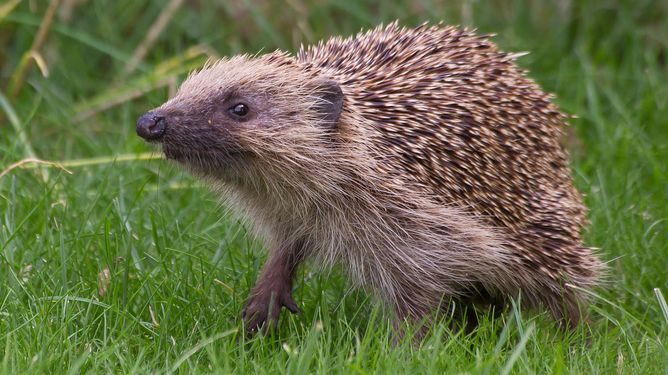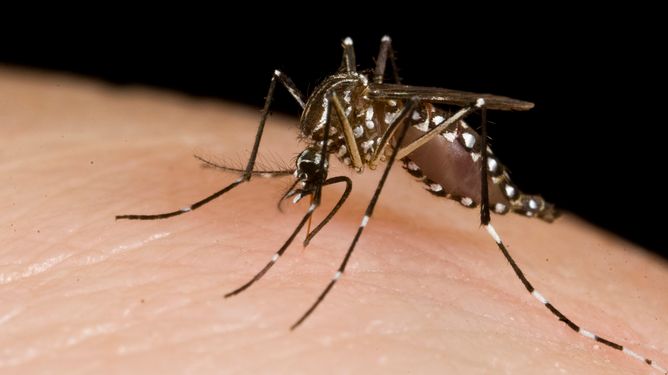
Press release -
COMMENT: Disappearing hedgehogs show familiarity may be a curse
Dr Mike Jeffries, Teaching Fellow, Ecology at Northumbria University, examines the plight of the European hedgehog against a backdrop of falling numbers.
Hedgehogs have acquired a surprisingly cuddly reputation for a nocturnal predator festooned with spines and fleas. Perhaps it is their habit of curling up, their classic cute faces with turned up noses, or their bumbling manner. While foxes are cunning, hares are mad and weasels are weaselly the hedgehog is not at all threatening, but instead they are portrayed as either a stout yeoman of olde England or, if female, a maternal Mrs Tiggy-Winkle.
All of this makes hedgehogs the ideal icon for wildlife hospitals such as St Tiggywinkles or road safety adverts.

Beatrix Potter’s Mrs Tiggy-Winkle Sofi, CC BY-NC
My memories of 1970s hedgehogs are not so much of the stout, aproned Mrs Tiggywinkle but what appeared to be a nightly suburban back garden lawn swingers party. Hedgehogs were routine visitors to our small 1960s housing estate garden, their noisy romantic trysts dismissed as “oh its just the hedgehogs at it again”. The prospect that hedgehogs would now warrant specific conservation action would have seemed far fetched. Judging by the noise they seemed determined to conserve themselves with gusto.
Times have changed. In 2014 hedgehogs joined the list of UK Biodiversity Action Plan species, under their more official name of the Western European Hedgehog, and, more informally, 2015 sees the launch of the first Hedgehog Improvement Areain the Birmingham suburb of Solihull.
Hedgehog numbers in the 1950s were put at more than 35 million, but contemporary surveys suggest that there may not be even one million. On the BBC’s Springwatch series, hedgehogs now star not as a familiar creature we can all see but as one of the endangered, heading towards extinction.
Decline and fall of the hedgehog
Most species declines are complicated and the hedgehog’s is no exception. The animals have lost countryside habitat as the fine grain of small fields, woods and old hedgerows was industrialised, and in cities their garden homes have been tided, paved and surrounded by impenetrable fences. Perhaps we can also point to climate change, declining prey populations and predation by badgers.
In addition hedgehogs are notoriously vulnerable as they cross the road – hence their resonance for road safety campaigns. Hedgehogs would do well to heed the advice of their animated road safety avatars and a recent study of a remnant population in Regent’s Park in London suggest that they might be doing just that. The park staff, working with The Royal Zoological Society of London, have been tracking their hedgehogs’ nightly movements using radio and GPS trackers. The results show the hedgehogs avoid crossing the surrounding roads and don’t stray beyond the safety of the park. All living creatures would do well to avoid city roads. It is not hard to see the rapid selective advantage of not crossing.
Spikes are no match for tyres.
Oddly, road kills can be evidence of improving circumstances as revealed by hedgehogs in the Republic of Ireland. You may have been perturbed by the earlier mention of badgers as a threat to hedgehogs, after all badgers are meant to be brave and noble. They are also indifferent to a hedgehog’s spines and chomp through them.
In Ireland badgers have been subject to a cull to try and limit the transmission of bovine TB. In areas where badger numbers have been culled the numbers of hedgehog road traffic victims has increased compared to control regions with no badger reduction. Similar results are coming through from the UK’s own badger cull. In the UK the 1990s saw marked increases in otter road casualties as they recolonised much of England and beavers may be next as their populations expand. Road kill may not be the ideal methodology but can be a useful and effective bell weather of change.

Sparrows are disappearing too. John Haslam, CC BY
The hedgehog’s fate is not the only recent decline of a once familiar creature. Just look at house sparrows, starlings or wall brown butterflies – all of these creatures were once so commonplace you’d not give them a second glance, and all are now in trouble. From a species point of view it pays to be rare. We are not bad at the last ditch, highly expensive defence or reintroduction of white tailed sea eagles andlarge blue butterflies.
Meantime the hedgehog’s supporters are rallying. This year will see the first “Day of the Hedgehog“, a follow up to anational hedgehog survey. If only they hadn’t made the event sound like a 1970s low-budget horror movie. Or maybe they know something about those back garden noises best left unsaid.
![]()
This article was originally published on The Conversation. Read the original article.
Categories
Northumbria is a research-rich, business-focussed, professional university with a global reputation for academic excellence. To find out more about our courses go towww.northumbria.ac.uk
If you have a media enquiry please contact our Media and Communications team at media.communications@northumbria.ac.uk or call 0191 227 4571.









